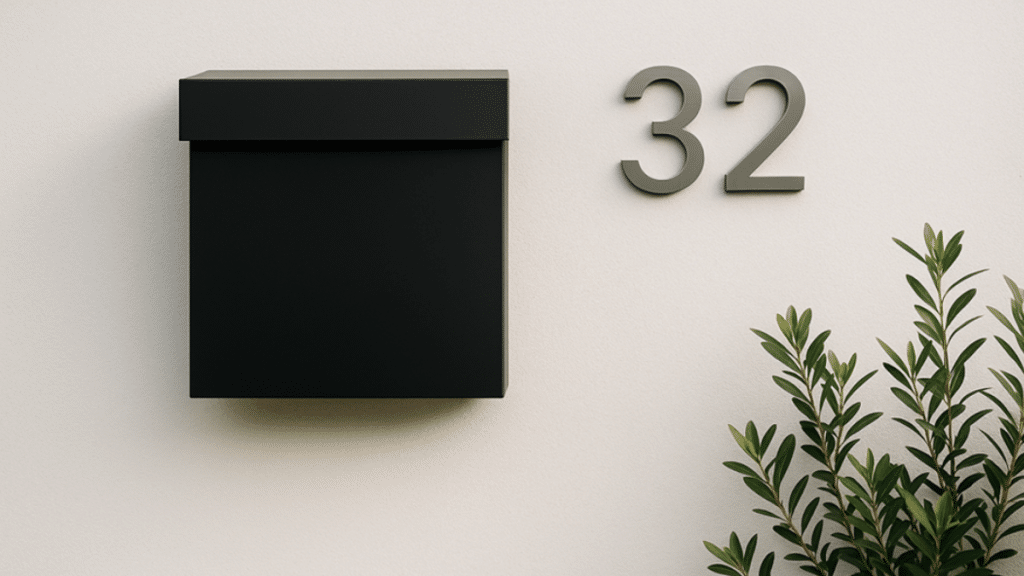Why Exterior Design Is Shifting Toward the Details
We tend to think big when we talk about design. We focus on façades, landscaping, bold colors, or architectural geometry. But sometimes, it’s the small and overlooked elements that complete a home’s visual language.
One such detail, often neglected and underestimated, is the mailbox. Once a purely functional object bolted to a wooden post, today’s mailbox has become a canvas for intentional design.
In 2025, where more homeowners seek visual harmony between exterior and interior spaces, the mailbox is no longer an afterthought. It’s becoming part of a curated approach to curb appeal—one that values cohesion, durability, and design literacy.
The Rise of Architectural Mailboxes
Clean lines, quiet materials
There’s a reason modern homeowners are increasingly rethinking their mailbox setup. As contemporary homes trend toward minimalism and refined geometry, even a small disruption—a mismatched, rusted, or oversized mailbox—can break the aesthetic flow.
Today’s architectural mailboxes are designed to integrate rather than stand out. They adopt materials like brushed stainless steel, powder-coated aluminum, and composite wood finishes that echo façade treatments or fencing.
Rather than ornamental accents, these pieces are defined by absence: no scrollwork, no plastic flags, no glossy colors. Just purpose-built elegance.
Security as an aesthetic value
Another shift is the way we value subtle utility. In the age of e-commerce and package theft, features like lockable mail compartments or discreet drop slots are not only practical—they’re part of the new design standard.
A well-designed mailbox is no longer just “secure.” It’s secure in a way that doesn’t look forced. In a way that disappears into the architecture while still fulfilling its purpose.
Design, scaled down
Brands like Mailbox Avenue have understood this subtle shift. Their collections—ranging from wall-mounted units to post-based designs—don’t shout for attention. They quietly complement modern homes, enhancing their overall composition rather than competing with it.
From matte black to anodized bronze, their finishes are subdued. Their silhouettes are clean. But the impact is unmistakable—especially when paired with matching posts or minimalist house numbers.
Rethinking Function in Daily Rituals
The beauty of small interactions
We check the mail almost without thinking. It’s a daily movement: unlocking the box, flipping the lid, retrieving envelopes. But when that motion involves an object that’s been thoughtfully placed, beautifully built, and aligned with the rest of the home, the interaction changes.
It becomes a moment—not of awe, but of subtle satisfaction. A reminder that intentional design doesn’t just belong in open-plan kitchens or spa-like bathrooms. It belongs at the street edge too.
Maintenance-free by design
Modern mailboxes also reflect a growing preference for low-maintenance design. Powder-coated metals don’t rust. UV-treated finishes don’t fade. Drainage holes and weather seals keep letters dry in any season.
This functional longevity aligns with broader architectural trends—less repainting, less repairing, fewer replacements. A mailbox that lasts is a design decision, not just a practical one.
Beyond the Mailbox: A Language of Detail
When curb appeal becomes composition
Think of the mailbox not as a standalone item, but as part of a composition. It shares space with house numbers, lighting, path borders, and plantings. Done well, these elements work in concert to create a visual rhythm.
A floating number plaque in brushed steel, a low garden light, a modern mailbox with a matching post—these become visual echoes that tie the exterior together.
This isn’t maximalism or showiness. It’s architectural editing. Making every visible item contribute to the language of the home, without redundancy.
Small details, lasting impressions
In a digital world, the physical space around your home still shapes how it’s perceived. From neighbors walking by to guests arriving for the first time, your mailbox is among the first signals of what to expect.
It may not be what they remember—but it’s often what they notice first.
